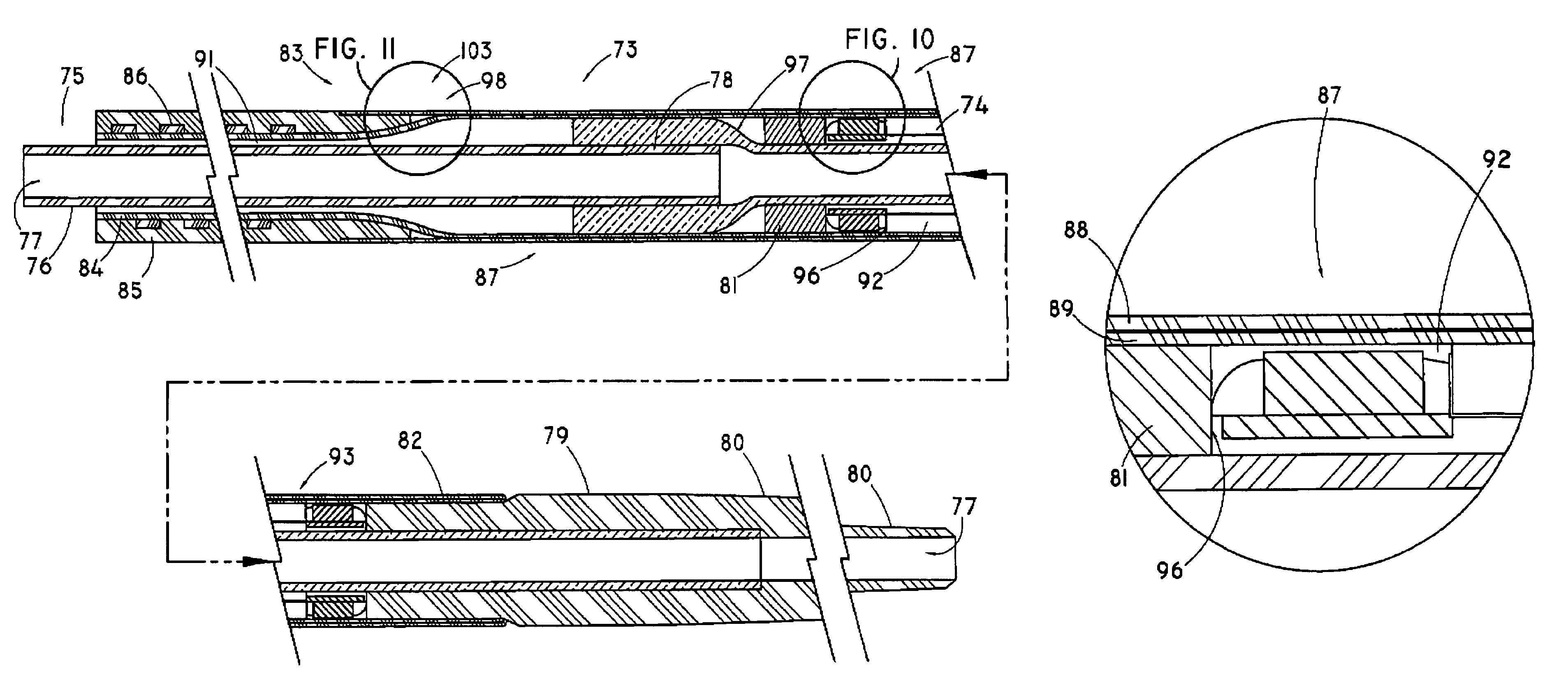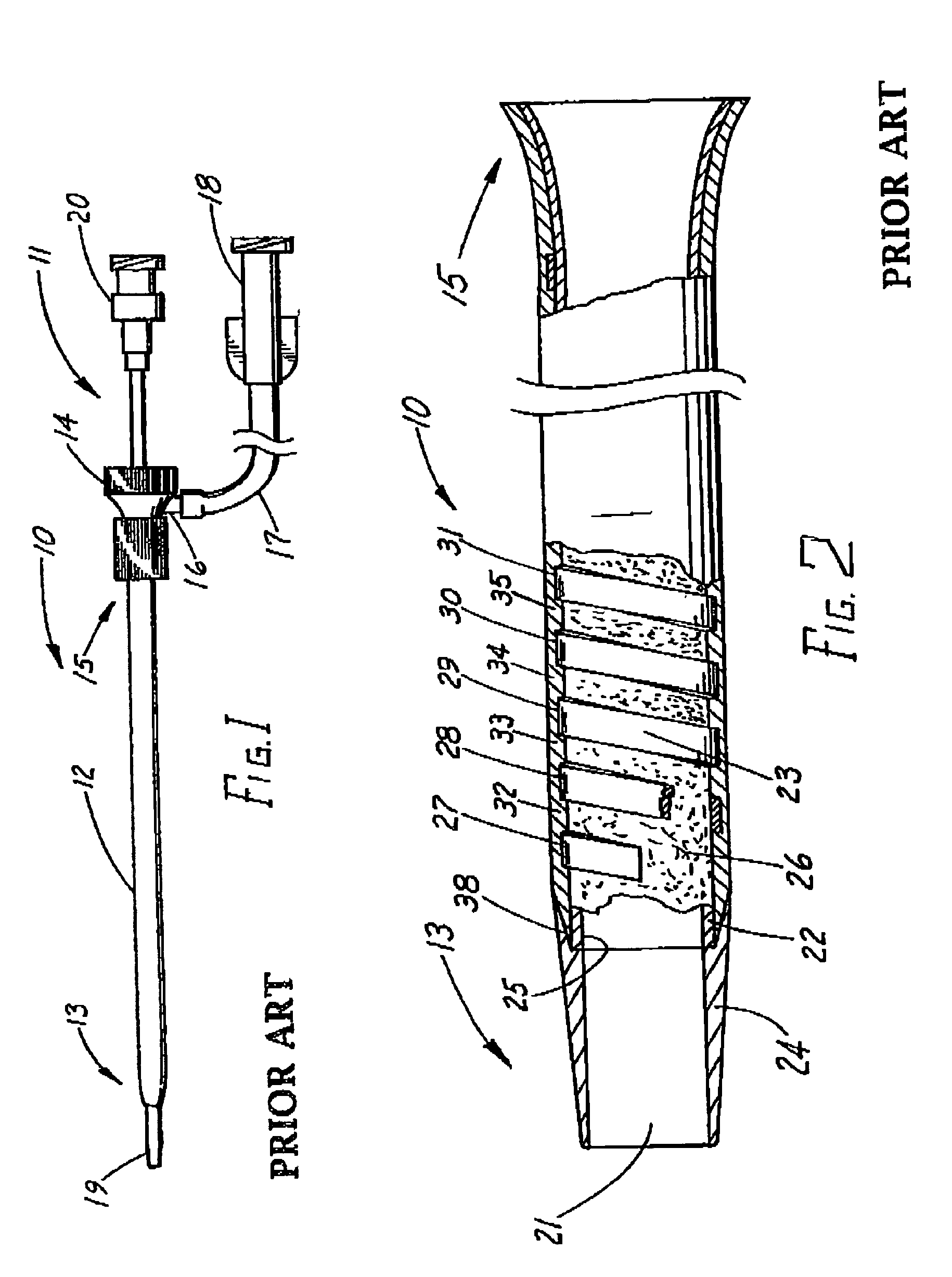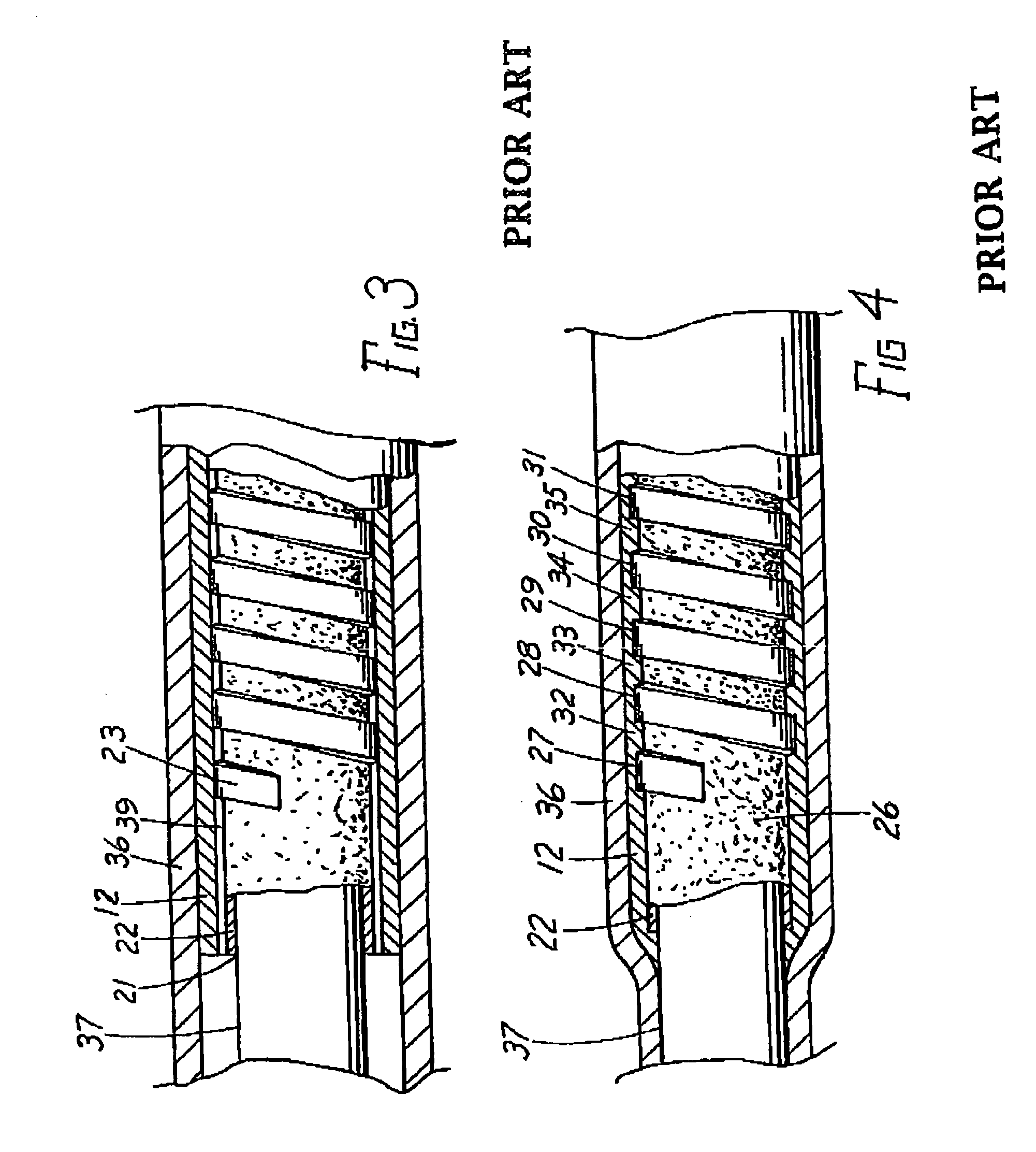Delivery catheter and method of manufacture
- Summary
- Abstract
- Description
- Claims
- Application Information
AI Technical Summary
Benefits of technology
Problems solved by technology
Method used
Image
Examples
Embodiment Construction
[0040]FIG. 1 depicts an illustrative flexible, kink-resistant, introducer sheath 10 with a tapered dilator 11 extending longitudinally through the passageway of the sheath. As shown, the introducer sheath includes an outer tube 12 with a tapered distal end 13 and connector valve 14 attached about proximal end 15 of the sheath. Well-known connector valve 14 includes a silicone disk (not shown) for preventing the backflow of fluids therethrough. The disk includes a slit for the insertion of dilator 11. Byway of example, the dilator 11 has a 6.0 French (0.079″) outside diameter. Connector 14 also includes side arm 16 to which polyvinyl tube 17 and male Luer lock connector 18 are connected for introducing and aspirating fluids therethrough. Dilator 11 includes tapered distal end 19 for accessing and dilating a vascular access site over a well-known and commercially available wire guide. The guide is inserted in the vessel with an introducer needle using, for example, the well-known perc...
PUM
| Property | Measurement | Unit |
|---|---|---|
| Diameter | aaaaa | aaaaa |
| Flexibility | aaaaa | aaaaa |
| Melting point | aaaaa | aaaaa |
Abstract
Description
Claims
Application Information
 Login to View More
Login to View More - Generate Ideas
- Intellectual Property
- Life Sciences
- Materials
- Tech Scout
- Unparalleled Data Quality
- Higher Quality Content
- 60% Fewer Hallucinations
Browse by: Latest US Patents, China's latest patents, Technical Efficacy Thesaurus, Application Domain, Technology Topic, Popular Technical Reports.
© 2025 PatSnap. All rights reserved.Legal|Privacy policy|Modern Slavery Act Transparency Statement|Sitemap|About US| Contact US: help@patsnap.com



